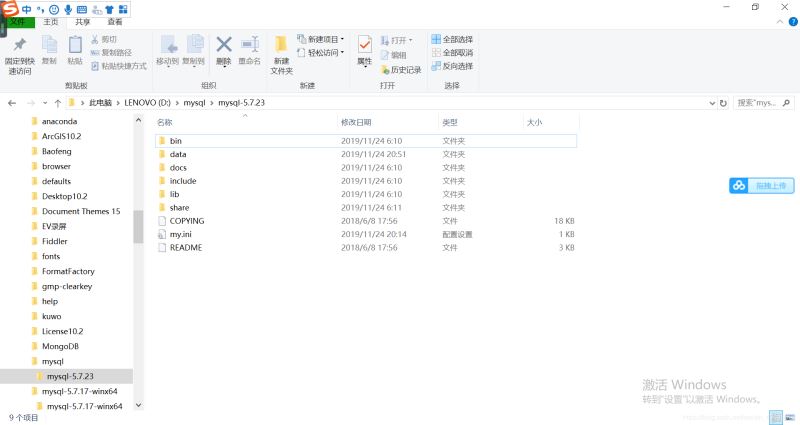一、MySQL中如何表示当前时间?
其实,表达方式还是蛮多的,汇总如下:
CURRENT_TIMESTAMP
CURRENT_TIMESTAMP()
NOW()
LOCALTIME
LOCALTIME()
LOCALTIMESTAMP
LOCALTIMESTAMP()
二、关于TIMESTAMP和DATETIME的比较
一个完整的日期格式如下:YYYY-MM-DD HH:MM:SS[.fraction],它可分为两部分:date部分和time部分,其中,date部分对应格式中的“YYYY-MM-DD”,time部分对应格式中的“HH:MM:SS[.fraction]”。对于date字段来说,它只支持date部分,如果插入了time部分的内容,它会丢弃掉该部分的内容,并提示一个warning。
如下所示:
mysql> create table test(id int,hiredate date); Query OK, 0 rows affected (0.01 sec) mysql> insert into test values(1,'20151208000000'); Query OK, 1 row affected (0.00 sec) mysql> insert into test values(1,'20151208104400'); Query OK, 1 row affected, 1 warning (0.01 sec) mysql> show warning; ERROR 1064 (42000): You have an error in your SQL syntax; check the manual that corresponds to your MySQL server version for the right syntax to use near 'warning' at line 1 mysql> select * from test; +------+------------+ | id | hiredate | +------+------------+ | 1 | 2015-12-08 | | 1 | 2015-12-08 | +------+------------+ 2 rows in set (0.00 sec)
注:第一个没提示warning的原因在于它的time部分都是0
TIMESTAMP和DATETIME的相同点:
1> 两者都可用来表示YYYY-MM-DD HH:MM:SS[.fraction]类型的日期。
TIMESTAMP和DATETIME的不同点:
1> 两者的存储方式不一样
对于TIMESTAMP,它把客户端插入的时间从当前时区转化为UTC(世界标准时间)进行存储。查询时,将其又转化为客户端当前时区进行返回。
而对于DATETIME,不做任何改变,基本上是原样输入和输出。
下面,我们来验证一下
首先创建两种测试表,一个使用timestamp格式,一个使用datetime格式。
mysql> create table test(id int,hiredate timestamp); Query OK, 0 rows affected (0.01 sec) mysql> insert into test values(1,'20151208000000'); Query OK, 1 row affected (0.00 sec) mysql> create table test1(id int,hiredate datetime); Query OK, 0 rows affected (0.01 sec) mysql> insert into test1 values(1,'20151208000000'); Query OK, 1 row affected (0.00 sec) mysql> select * from test; +------+---------------------+ | id | hiredate | +------+---------------------+ | 1 | 2015-12-08 00:00:00 | +------+---------------------+ 1 row in set (0.01 sec) mysql> select * from test1; +------+---------------------+ | id | hiredate | +------+---------------------+ | 1 | 2015-12-08 00:00:00 | +------+---------------------+ 1 row in set (0.00 sec)
两者输出是一样的。
其次修改当前会话的时区
mysql> show variables like '%time_zone%'; +------------------+--------+ | Variable_name | Value | +------------------+--------+ | system_time_zone | CST | | time_zone | SYSTEM | +------------------+--------+ 2 rows in set (0.00 sec) mysql> set time_zone='+0:00'; Query OK, 0 rows affected (0.00 sec) mysql> select * from test; +------+---------------------+ | id | hiredate | +------+---------------------+ | 1 | 2015-12-07 16:00:00 | +------+---------------------+ 1 row in set (0.00 sec) mysql> select * from test1; +------+---------------------+ | id | hiredate | +------+---------------------+ | 1 | 2015-12-08 00:00:00 | +------+---------------------+ 1 row in set (0.01 sec)
上述“CST”指的是MySQL所在主机的系统时间,是中国标准时间的缩写,China Standard Time UT+8:00
通过结果可以看出,test中返回的时间提前了8个小时,而test1中时间则不变。这充分验证了两者的区别。
2> 两者所能存储的时间范围不一样
timestamp所能存储的时间范围为:’1970-01-01 00:00:01.000000′ 到 ‘2038-01-19 03:14:07.999999’。
datetime所能存储的时间范围为:’1000-01-01 00:00:00.000000′ 到 ‘9999-12-31 23:59:59.999999’。
总结:TIMESTAMP和DATETIME除了存储范围和存储方式不一样,没有太大区别。当然,对于跨时区的业务,TIMESTAMP更为合适。
三、关于TIMESTAMP和DATETIME的自动初始化和更新
首先,我们先看一下下面的操作
mysql> create table test(id int,hiredate timestamp);
Query OK, 0 rows affected (0.01 sec)
mysql> insert into test(id) values(1);
Query OK, 1 row affected (0.00 sec)
mysql> select * from test;
+------+---------------------+
| id | hiredate |
+------+---------------------+
| 1 | 2015-12-08 14:34:46 |
+------+---------------------+
1 row in set (0.00 sec)
mysql> show create table test\G
*************************** 1. row ***************************
Table: test
Create Table: CREATE TABLE `test` (
`id` int(11) DEFAULT NULL,
`hiredate` timestamp NOT NULL DEFAULT CURRENT_TIMESTAMP ON UPDATE CURRENT_TIMESTAMP
) ENGINE=InnoDB DEFAULT CHARSET=latin1
1 row in set (0.00 sec)
看起来是不是有点奇怪,我并没有对hiredate字段进行插入操作,它的值自动修改为当前值,而且在创建表的时候,我也并没有定义“show create table test\G”结果中显示的“ DEFAULT CURRENT_TIMESTAMP ON UPDATE CURRENT_TIMESTAMP”。
其实,这个特性是自动初始化和自动更新(Automatic Initialization and Updating)。
自动初始化指的是如果对该字段(譬如上例中的hiredate字段)没有显性赋值,则自动设置为当前系统时间。
自动更新指的是如果修改了其它字段,则该字段的值将自动更新为当前系统时间。
它与“explicit_defaults_for_timestamp”参数有关。
默认情况下,该参数的值为OFF,如下所示:
mysql> show variables like '%explicit_defaults_for_timestamp%'; +---------------------------------+-------+ | Variable_name | Value | +---------------------------------+-------+ | explicit_defaults_for_timestamp | OFF | +---------------------------------+-------+ 1 row in set (0.00 sec)
下面我们看看官档的说明:
By default, the first TIMESTAMP column has both DEFAULT CURRENT_TIMESTAMP and ON UPDATE CURRENT_TIMESTAMP if neither is specified explicitly。
很多时候,这并不是我们想要的,如何禁用呢?
1. 将“explicit_defaults_for_timestamp”的值设置为ON。
2. “explicit_defaults_for_timestamp”的值依旧是OFF,也有两种方法可以禁用
1> 用DEFAULT子句该该列指定一个默认值
2> 为该列指定NULL属性。
如下所示:
mysql> create table test1(id int,hiredate timestamp null);
Query OK, 0 rows affected (0.01 sec)
mysql> show create table test1\G
*************************** 1. row ***************************
Table: test1
Create Table: CREATE TABLE `test1` (
`id` int(11) DEFAULT NULL,
`hiredate` timestamp NULL DEFAULT NULL
) ENGINE=InnoDB DEFAULT CHARSET=latin1
1 row in set (0.00 sec)
mysql> create table test2(id int,hiredate timestamp default 0);
Query OK, 0 rows affected (0.01 sec)
mysql> show create table test2\G
*************************** 1. row ***************************
Table: test2
Create Table: CREATE TABLE `test2` (
`id` int(11) DEFAULT NULL,
`hiredate` timestamp NOT NULL DEFAULT '0000-00-00 00:00:00'
) ENGINE=InnoDB DEFAULT CHARSET=latin1
1 row in set (0.00 sec)
在MySQL 5.6.5版本之前,Automatic Initialization and Updating只适用于TIMESTAMP,而且一张表中,最多允许一个TIMESTAMP字段采用该特性。从MySQL 5.6.5开始,Automatic Initialization and Updating同时适用于TIMESTAMP和DATETIME,且不限制数量。
参考:
1. http://dev.mysql.com/doc/refman/5.6/en/datetime.html
2. http://dev.mysql.com/doc/refman/5.6/en/timestamp-initialization.html
以上就是本文的全部内容,希望对大家的学习有所帮助,也希望大家多多支持NICE源码。








